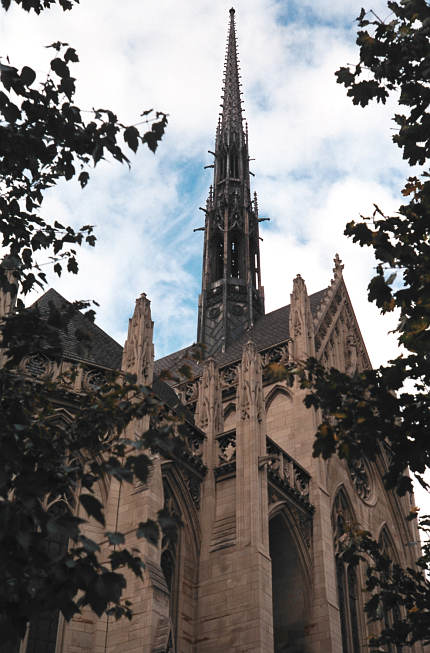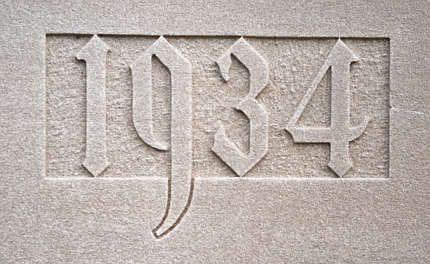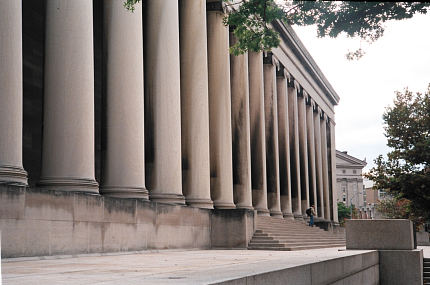Somehow Charles Z. Klauder managed to create perfectly Gothic buildings with an Art Deco sensibility in every detail. His Cathedral of Learning is the most perfect Gothic skyscraper in the world; it’s organically Gothic, not just a skyscraper with Gothic trimmings.
On the same ideally landscaped square in Oakland sits Heinz Chapel, Klauder’s last work, a building with more modest dimensions but more flamboyant ornament. Its lacy spire is a remarkable work of Gothic fantasy. Its transept windows, designed (like all the other stained glass in the building) by Charles J. Connick, are supposedly the tallest stained-glass windows in the world, or among the tallest, or rather tallish, depending on which source you consult. It’s one of Pittsburgh’s favorite wedding sites, and on a Saturday afternoon weddings follow one after another as though the brides were on a conveyor belt.


The cornerstone identifies the date in figures that perfectly match the Deco Gothic spirit of the building.

These photographs were taken with a Zorki-4 bearing a Jupiter-8 f/2 lens, which is a fine camera for a day out in the city. It’s versatile, it’s built like a Soviet tank, and the lens is sharp and fast (and interchangeable with any screwmount Leica lens). And there were literally millions made, so if it does break you can just get another one.












